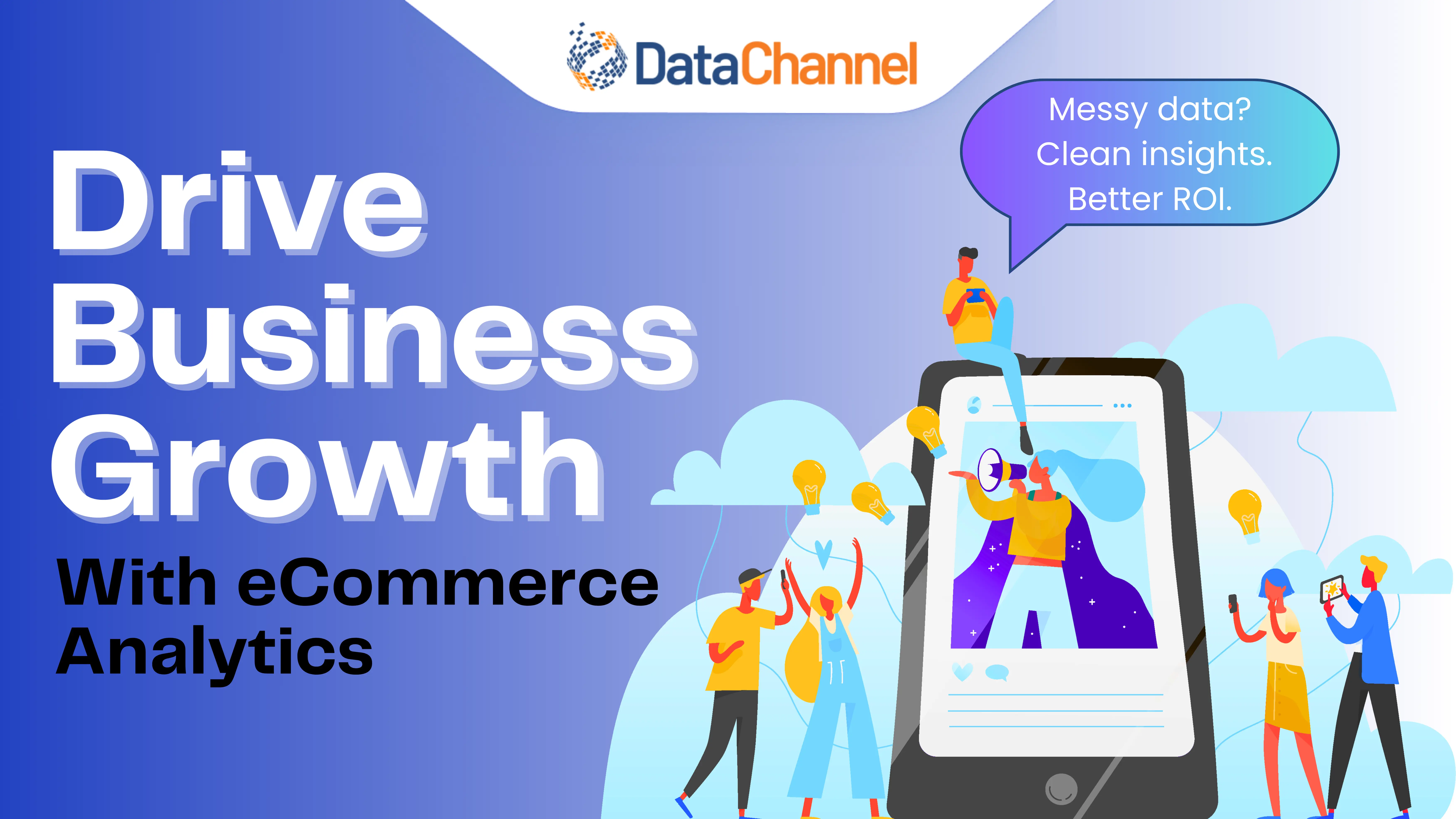
What is Data Warehousing? How it Works, Types, and General Stages
If you have ever worked or are working in a data-driven organization, you must have realized that large volumes of data are generated daily in organizational systems. This data needs to be integrated and stored in a shared platform. Different departments across an organization can use it for business intelligence, analytics, reporting, and decision-making purposes.
We live in a world where technology has overtaken most of the organizational processes, including data integration. More tools and technologies will be introduced in the future to take care of our growing data needs.
The changing face of data
Unlike earlier days, data comes in various forms and from different platforms or sources. The data needs to be precisely integrated into a common platform, known as a data warehouse, where it can be transformed to drive meaningful information. All big data organizations have incorporated the best data integration tools and are working with platforms like DataChannel to drive useful insights from the big data silos.
It has become quite easier to consolidate data from disparate systems and find a pattern out of it. But before diving deeper into the concept, one should first know what Data Warehousing is.
What is Data Warehousing?
Data warehousing is a process used to collect and manage data from multiple sources into a centralized repository to drive actionable business insights. With all your data in one place, it becomes simpler to perform analysis and reporting at different aggregate levels.
It is the core of the BI system and helps you make better business decisions. In simple words, it is the electronic storage space for all your business data integrated from different marketing and other sources.
Types of Data Warehousing
There are mainly three types of data warehousing, which are as follows:
- Enterprise Data Warehouse: Enterprise data warehouse is a centralized warehouse that offers decision-making support to different departments across an enterprise. It provides a unified approach for organizing as well as representing data. With this warehouse at your end, you gain the ability to classify the data as per the subject and grant the level of access to different departments accordingly.
- Operational Data Store: Popularly known as ODS, Operational Data Store is used when an organization’s reporting needs are not satisfied by a data warehouse or an OLTP system. In ODS, a data warehouse can be refreshed in real-time, making it best for routine activities like storing employees’ records.
- Data Mart: As part of a data warehouse, Data Mart is particularly designed for a specific business line like finance, accounts, sales, purchases, or inventory. The warehouse allows you to collect data directly from the sources.
How Data Warehousing Works?
The architecture of a data warehouse consists of three tiers. The bottom one is the database server, where data is loaded and stored. The middle one is the analytics engine that analyzes the data.The top one is the front-end client representing the result through analysis, reporting, and data mining tools. The entire work of a data warehouse depends on these tiers.
The Data warehouse works by collecting and organizing data into a comprehensive database. Once the data is collected, it is sorted into various tables depending on the data type and layout.You can even store your confidential business details in the data warehouse, like employee details, salary information, and others.
Information derived from a data warehouse helps companies to analyze their customers and anticipate the coming trends in the competitive market. By having precise information about what their customers want and what they are expecting from a business, it becomes easier to serve them right and achieve higher customer satisfaction levels.
With the right data warehousing platform, you can always think ahead of your competitors regarding historical analysis, product development, pricing strategy, forecasting market changes, and customer satisfaction. Investing in an efficient data warehouse will help your business climb to the top of the competition curve.

Data Warehousing and Data Analytics
People often get confused between data warehousing and data analytics. These two terms may seem similar but are not the same, which sums up the difference between them. Data warehousing is the process of consolidating all the organizational data into one common database.
On the other hand, data analytics is all about analyzing the raw data and driving conclusions from the information gained. The concepts are interrelated but different. The process of data analytics begins once the process of data warehousing is completed.
General stages of Data Warehouse
The need for a data warehouse has grown with time. Every organization, irrespective of its size, wants a data warehouse that provides a unified view of all its data. This is the time when the sophisticated use of a data warehouse began.
Here is the list of general stages of the use of a data warehouse:
- Offline Operational Database: In this stage, data is copied to a server from an operating system so that loading, processing, and reporting the data does not impact the performance of the operational system.
- Offline Data Warehouse: The data stored in the warehouse is regularly updated from the operational database to derive useful business insights.
- Real-time Data Warehouse: Whenever a transaction takes place in the operational database, the same is updated in the data warehouse.
- Integrated Data Warehouse: Every transaction taking place in the operational database is updated simultaneously in the data warehouse. Then, the warehouse generates transactions that are forwarded to the operational database.
Data Warehouse Appliances
Data Warehouse Appliances are a set of hardware and software tools used for storing data. Every data-driven business uses these appliances to build a centralized and comprehensive data warehouse, where all kinds of functional business data can be stored.
Data Warehouse Appliance
When these appliances are combined with data warehouses, help organizations to meet their modern-day data integration requirements. By combining all customer data in a data warehouse, you can get the following benefits:
- Cross-account indexing
- Easy access to customers’ historical data.
- Enhanced interactive voice response technology
- Customized digital communications
Data Warehouse appliances act as the building blocks for creating efficient business data warehouse systems.
Concepts of Data Warehouse
- Basic Data Warehouse: With a basic data warehouse, you can minimize the total amount of data stored in a system. This can be done by removing redundancy within the information, making it look simple and clear.As the concept combines information from multiple sources, different departments can access data directly from the warehouse without wasting any time involved in opening multiple folders to get the relevant information.
- Data Warehouse with Staging Area: Some data warehouses perform the cleansing process before moving the data to storage. These systems have “staging areas” where information is first reviewed and evaluated and then transferred into the warehouse. This way, you get only useful and relevant data stored in your warehouse.As a business, you can use data warehouses with staging areas to process large volumes of customer data so that irrelevant information can be filtered out, and your team will only be left with precise information to work on.
- Data Warehouse With Data Marts: With data marts, you can enhance your data warehouse’s customization level. Once the data is processed, data marts streamline information to teams and employees who need it the most. This will help different departments across an organization boost their productivity as they don’t have to wait for other departments to share the required information.This will also increase the pace of decision-making and assist businesses never to miss an opportunity.
Data Warehousing and Business Intelligence
If you have reached this part of the article, then you must have developed an understanding of what data warehousing is. Still, to sum up, data warehousing is a process of combining data from multiple sources and organizing it in a way that supports organizational tactical and strategic decision making. The main purpose of a data warehouse is to provide a transparent picture of the business at a given point in time.
On the other hand, Business Intelligence (BI) can be described as a set of tools and methods that facilitate the transformation of raw data into meaningful patterns to drive useful insights to make better business decisions. The process of BI involves data preparation, analytics, and visualization.
All the BI tools do not aim to provide all three capabilities; therefore, you can go for full-stack solutions to receive the perks of all three capabilities.
BI tools need a data warehouse to work with unstructured data as they have limited data preparation capability. However, you can get a full-stack Business Intelligence Analytics & Dashboard Software from DataChannel that provides you an end-to-end data warehousing solution.
Business Intelligence is an umbrella term used with data analytics. It is a process that performs data preparation, analytics, and visualization. Whereas data warehousing describes tools that combine data from disparate sources, clean the data, and prepare it for analysis.
Here, we are listing some of the BI tools that can help you get a more straightforward approach to analyze and present data sets in a form that helps users to easily draw conclusions.
Tableau: Tableau is one of the fastest-growing data visualization tools used by big data-driven organizations for BI purposes. It simplifies raw data and converts the same into an easily understandable format. With this tool at your end, you can speed up the process of data analytics. The tool creates visualizations in the form of worksheets and dashboards that can be understood by every professional working in an organization. The tool allows even a non-technical person to create a customized dashboard.
Features:
- Dashboards that provide you a wholesome view of your data
- Offers collaboration with other users
- Secure sharing of data
- Allows direct data usage from the data source
- Supports different data connectors, like MemSQL, Google Analytics
- Wide range of visualizations
Looker: Looker is a cloud-based business intelligence platform that collects data from multiple sources to provide its unified view that helps users to make better business decisions. The tool allows the different departments across your organization to analyze supply chains, interpret customer behavior, quantify customer value, and evaluate distribution processes more efficiently. It’s easy to use dashboards that allow users to present data and insights into customized graphs, charts, and reports.
Features:
- Provides APIs for integration
- Customizable dashboards
- Drag-and-drop mechanism
- Customize and export reports, charts, and graphs
- Connect to any SQL database
- Modern IDE for agile development and embellishment
- Real-time data exploration and collaboration
- Reliable tech support
Power BI: Another business intelligence platform by Microsoft that pulls data from several source systems in the cloud and on-premises and sums the information in an easy-to-understand dashboard. The platform can be integrated with other Microsoft platforms like Excel and help users to go beyond bar and pie charts.
Features:
- An array of powerful visualizations
- Allows users to select from a range of data sources
- Datasets filtration
- Customizable Dashboards
- Informative visualizations for a clearer picture
- Easy navigation between datasets and dashboards
- Informative reports

Datapine: A powerful BI tool that allows both data analysts and non-technical users to visualize and analyze data from multiple data sources quickly. It has data connectors that you can use to integrate all common data sources in seconds. With over 80 predefined dashboard templates and drag & drop user interface, you can build amazing data visualizations within minutes. The platform has many other features that add another level of efficiency to your data visualization and data analytics process.
Features:
- 50+ Data Connectors
- Runs cross-database queries
- Ad hoc Reporting
- Custom Fields & Expressions
- Modern predictive analytics tools
- Simple drag-and-drop features
- Multiple dashboards
Zoho Analytics: Zoho Analytics is a highly reliable BI and data analytics software that helps you find hidden insights from raw data and allow you to create visually appealing data visualizations and insightful dashboards within minutes. With this tool, you can sync all your data residing in different flat files, cloud storage, databases, and systems to perform in-depth reporting and analysis to make better decisions based on informed business insights.
Features:
- In-depth analytics
- Powerful analytical capabilities
- “Spreadsheet-like” interface for easier understanding
- Analysis and reporting
- Build key metrics
- Data Alerts
- Smart analytical assistant
Advantages of Choosing DataChannel
- 100+ Data Sources: We support trending and established data sources related to advertising, marketing, CRM, financial, and eCommerce platforms, along with support for ad-hoc files, google sheets, cloud storage, relational databases and ingestion of real-time data using webhooks. If we do not have the integration you need, reach out to our team and we will build it for you for free.
- Powerful scheduling and orchestration: our fully automated platform follows all ETL best practices deploys granular control over scheduling down to the exact minute.
- Granular control over what data to move: Unlike most tools which are highly opinionated and dictate what data they would move, we allow you the ability to choose down to field level what data you need. If you need to add another dimension or metric down the line, our easy-to-use UI lets you do that in a single click without any breaking changes to your downstream process.
- Reliable pipelines: We offer extensive logging, fault tolerance, and automated recovery, allowing for dependable and reliable ETL pipelines. If we are unable to recover, the extensive notifications will alert you via slack, app, and email for taking appropriate action.
- Built to scale at an affordable cost: Our best in class ETL tool is built to handle billions of rows of data and will scale with your business when you need them to, while allowing you to only pay for what you use today.
- Get Started within Minutes: We offer a self-serve UI, and our onboarding experts are always there to help you through the process.
- Managed Data Warehouse: While cloud-first data warehouses offer immense flexibility and opportunity, managing them can be a hassle without the right team and resources. If you do not want the trouble of managing them in-house, use our managed warehouse offering and get started today. Whenever you feel you are ready to do it in-house, simply configure your own warehouse and direct pipelines to it.
- Activate your data with Reverse ETL: The unidimensional approach toward data management (movement from apps to warehouses) is evolving constantly. Now you can use DataChannel’s reverse ETL capabilities to send data to the tools your business teams use every day. Set up alerts & notifications on top of your data warehouse and sync customer data across all platforms, converting your data warehouse into a powerful CDP (Customer Data Platform). You can even preview the data without ever leaving the platform.

Try DataChannel Free for 14 days










